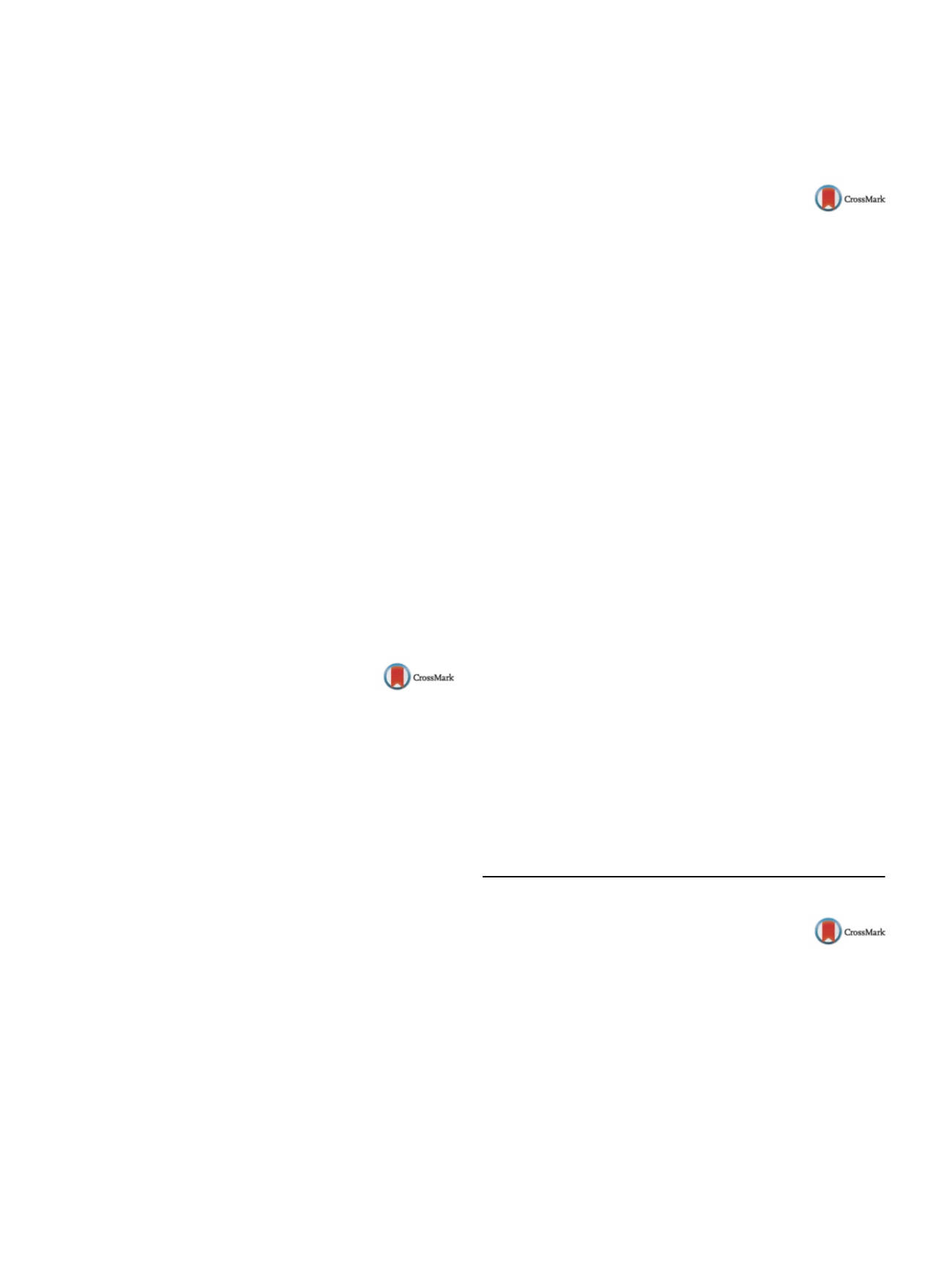

S44
25th European Congress of Psychiatry / European Psychiatry 41S (2017) S8–S52
the considerable variability in these neurobiological correlates
between patients can be translated into the clinical setting.
Objectives
We aimed to identify neuroimaging predictors of clin-
ical course in patients with schizophrenia. Combined with the
identification of genetically determined markers of schizophrenia
risk, our studies aimed to elucidate the biological basis and the
clinical relevance of inter-individual variability between patients.
Methods
We included over 150 patients with schizophrenia and
279 healthy volunteers across five neuroimaging centers in the
framework of the IMAGEMEND project
[1] . We performed multiple
studies on MRI scans using random forests and ROC curves to pre-
dict clinical course. Data from healthy controls served to normalize
the data from the clinical population and to provide a benchmark
for the findings.
Results
We identified ensembles of neuroimagingmarkers and of
genetic variants predictive of clinical course. Results highlight that
(i) brain imaging carries significant clinical information, (ii) clin-
ical information at baseline can considerably increase prediction
accuracy.
Conclusion
The methodological challenges and the results will
be discussed in the context of recent findings from other multi-site
studies. We conclude that brain imaging data on their own right are
relevant to stratify patients in terms of clinical course; however,
complementing these data with other modalities such as genetics
and clinical information is necessary to further develop the field
towards clinical application of the predictions.
Disclosure of interest
Giulio Pergola is the academic supervisor of
a Hoffmann-La Roche Collaboration grant that partially funds his
salary.
Reference
[1] Frangou S, Schwarz E, et al. World Psychiatry 2016, doi:
10.1002/wps.20334.
http://dx.doi.org/10.1016/j.eurpsy.2017.01.193S120
Neuroimaging findings in ADHD and
the role of genetics
B. Franke
Radboud University Medical Center, Departments of Human Genetics
and Psychiatry, Nijmegen, The Netherlands
ADHD is frequently diagnosed in children and adults. The disorder
is highly heritable. However, the genetic architecture of ADHD is
complex, with multiple genetic variants of individually small effect
size contributing to disease in most patients.
In our own studies as well as in the large mega-analyses of
the ENIGMA ADHD Working Group, we have investigated the
brain substrates of ADHD. We find the disorder to be char-
acterized by delayed sub–cortical and cortical growth of gray
matter in childhood, which gradually normalizes in adulthood:
sub–cortical volumes as well as cortical thickness and surface
area are smaller in children with ADHD, but become indistin-
guishable from healthy individuals in adulthood. The situation
looks different for white matter connectivity: both in childhood
and adulthood, widespread differences in the major white matter
tracts are found. The pattern of findings suggests that alterations
in myelination might lie at the basis of such case-control dif-
ferences. Since the disorder and many brain structural measures
affected in ADHD are highly heritable, we investigated the overlap
of genetic risk factors for ADHD with genetic factors involved in
brain volume. This resulted in the identification of several genetic
variants contributing to disease risk as well as ADHD-related brain
phenotype.
In conclusion, we find ADHD to be a disorder of delayed brain mat-
uration in terms of gray matter, but of persistently altered white
matter connectivity across the lifespan. Genetic factors influencing
both disease risk and brain measures might improve our under-
standing of disease etiology and persistence.
Disclosure of interest
The author declares that he has no compet-
ing interest.
http://dx.doi.org/10.1016/j.eurpsy.2017.01.194S121
Cortical and Sub–cortical volumetric
abnormalities in bipolar disorder
O. Andreassen
University of Oslo, NORMENT Centre- Dept of Mental Illness and
Addiction, Oslo, Norway
Previous MRI studies of bipolar disorder (BD) are often limited
by small sample sizes and heterogeneity exists with regard to
neuroimaging markers. To address these limitations, the ENIGMA
Bipolar Disorder Working Group collected the largest BD neu-
roimaging data set ever studied (
n
= 6,500). Here, we review
findings from sub–cortical volume and cortical thickness and area
analyses.
ENIGMA harmonized analysis methods were applied to 28 interna-
tional pooled study samples of MRI data and involved sub–cortical
and cortical imaging analyses. We assessed differences between
BD and healthy controls (HC) using both mega and meta–analytic
multiple linear regressionmodels, adjusting for standard covariates
(age, sex, etc.), and correcting for multiple comparisons.
Sub–cortical volume analysis revealed we found consistent volu-
metric reductions in BD patients for hippocampus and thalamus
and enlarged lateral ventricles in patients. In BD, cortical gray mat-
ter was thinner in frontal, temporal and parietal regions of both
brain hemispheres. BD had large general effects on mean gray mat-
ter thickness in both left and right brain hemispheres. Further we
found that psychopharmacological treatment showed significant
associations with cortical thickness and surface area.
The ENIGMA pipeline allows for identification of brain MRI abnor-
malities in BD in the largest analysis ever conducted. The results
suggest a pattern of brain structure abnormalities, which provide
novel insight in pathophysiology of BD, and potential effects of
mood stabilizing agents.
Disclosure of interest
Received speaker’s honorarium from Lund-
beck, Lilly, Otsuka
http://dx.doi.org/10.1016/j.eurpsy.2017.01.195Symposium: Schizophrenia and clinical
psychopathology: From research to clinical
practice
S122
Are deficits in social cognition
differentiating between
schizophrenia and affective disorders
G. Sachs
1 ,∗
, E . Maihofer
2 , A.Erfurth
21
Medical University of Vienna, Department of Psychiatry and
Psychotherapy, Vienna, Austria
2
Otto Wagner Spital, 6th Psychiatric Department, Vienna, Austria
∗
Corresponding author.
Over the last decades, in matters of the assessment of psy-
chopathology and its clinical consequences, there has been an
increased interest in neurocognitive function including non-social
and social cognition.
Classic psychopathology -as represented e.g. by the standardized
AMDP system- focuses on pathognomonic signs for the catego-
rization of syndromes
[1] and differentiates between disturbances


















